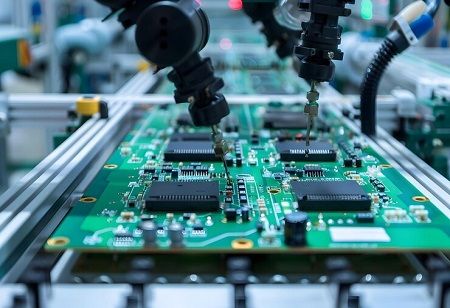
India's Electronics Parts Plan Draws Rs 1.1L Cr Investment
- Govt's scheme draws Rs 1.1L crore proposals, doubling target for electronics parts.
- Potential Rs 10.3L crore production; 60% applications from MSMEs for deep ecosystem.
- Focus on self-reliance, global supply; no special rules for Chinese investments.
The Indian government's push to strengthen the domestic electronics component ecosystem has achieved remarkable success, drawing investment proposals exceeding Rs 1.1 lakh crore from both global and local companies. This figure nearly doubles the original target, signaling strong industry confidence in India's manufacturing ambitions.
Electronics and IT Minister Ashwini Vaishnaw highlighted that these proposals could lead to an incremental production value of Rs 10.3 lakh crore once implemented, far surpassing the initial goal of Rs 4.6 lakh crore. The scheme, which offers incentives worth Rs 22,805 crore, aims to build a self-reliant supply chain that not only meets domestic needs but also positions India as a key global supplier of electronics components.
Vaishnaw emphasized the program's focus on fostering indigenous innovation, encouraging companies to develop original designs and intellectual property within India. This "Swadeshi" approach is expected to enhance India's competitiveness in various sectors, including mobile phones and IT hardware.
Notably, around 60percent of the 249 applications received are from Micro, Small, and Medium Enterprises (MSMEs), ensuring a broad-based and resilient ecosystem. Prominent global players like Foxconn and Flex, alongside domestic firms such as Tata, Dixon, Amber, and Optiemus, have submitted proposals, reflecting widespread interest.
Also Read: VinFast India, SBI Partner to Finance EV Dealer Network
Addressing concerns about foreign investments, particularly from China, the minister clarified that no special exemptions exist. All proposals from countries sharing land borders with India are processed under Press Note 3, introduced in April 2020, adhering strictly to established laws. The largest single proposal stands at Rs 22,000 crore, and the government plans to expedite approvals to kick start projects promptly.
Breaking down the applications by category, the "enclosures for mobile, IT hardware products, and related devices" segment attracted 16 proposals worth Rs 35,813 crore. The "flexible printed circuit board" category received 11 applications totaling Rs 16,542 crore, while "electro-mechanicals" saw 87 proposals amounting to Rs 14,362 crore. Multi-layer PCBs garnered 43 applications valued at Rs 14,150 crore. Several categories have received proposals for the first time, expanding the scope of India's electronics manufacturing.
Sunil Vachani, Chairman of Dixon, noted that the initiative will significantly boost value addition in Indian-made products, making them more competitive on the global stage. Overall, this development underscores India's strategic shift toward a robust, export-oriented electronics industry, reducing dependency on imports and creating new economic opportunities.

.jpg)